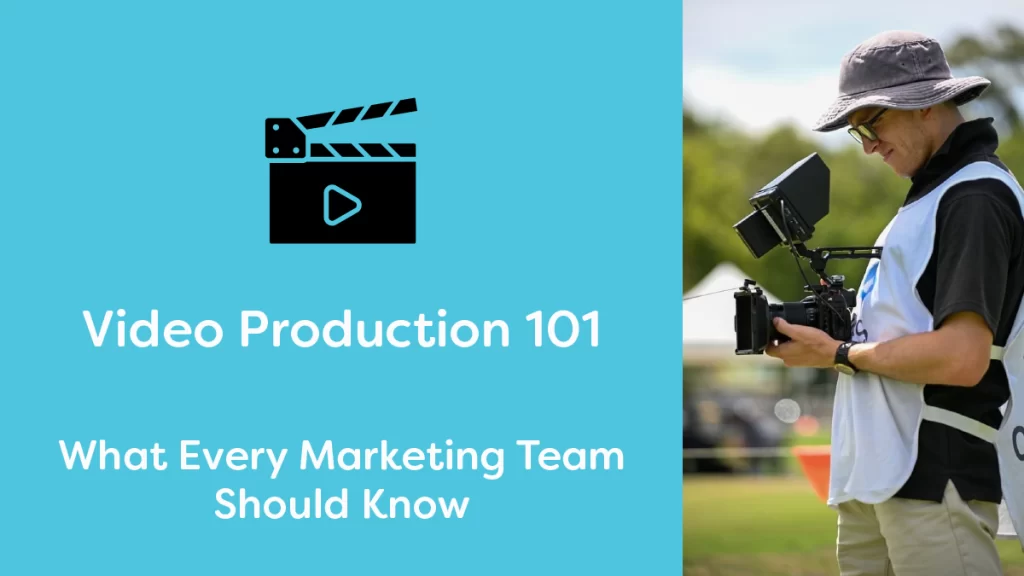How to Brief Your Video Production Team: What Every Marketing Manager Should Know

Video content is king.
It’s engaging, easily shareable, and can communicate your brand’s message more effectively than text alone.
However, the success of your video content hinges on how well you brief your video production team.
As a marketing manager, ensuring that your team fully understands your vision and goals is crucial to producing a video that resonates with your audience.
This guide will walk you through the key elements you need to consider when briefing your video production company for the best possible outcome.
Have A Clear Vision
A clear vision is the bedrock of any successful video project.
Before you even engage a video production team, you must have a solid idea of what you want to achieve with your video content.
Are you looking to raise brand awareness, promote a new product, or educate your audience? Your vision should be specific, measurable, and aligned with your overall marketing objectives.
A well-defined vision not only guides your production team but also ensures that every aspect of the video, from the script to the final edit, is in line with your goals.
Without a clear vision, your video project is likely to suffer from scope creep, leading to wasted time and resources.

Align Your Brand Values
Your vision is more than just a set of goals; it’s also about ensuring that the video aligns with your brand’s values and identity.
For instance, if your brand is known for its innovative and cutting-edge approach, your video should reflect this through creative storytelling, unique visual styles, and modern production techniques.
On the other hand, if your brand is associated with trust and reliability, your video should focus on clear, straightforward messaging that reinforces these qualities.
A clear vision allows your production team to make decisions that are consistent with your brand, from the choice of music to the style of animation.
This alignment is essential for maintaining brand integrity and ensuring that your audience receives a coherent message across all touchpoints.
Craft A Clear Message
Once your vision is set, the next step is to develop a clear message that you want to communicate to your customers.
This message should be the core of your video and should resonate with your target audience.
It’s essential to think about what you want your audience to take away from the video—whether it’s a deeper understanding of your brand, a call to action, or simply an emotional connection.
Tailor The Message: Understand Your Audience
Knowing your audience is critical to crafting a message that resonates.
Are you speaking to busy professionals who need quick, actionable insights? Or are you addressing a more general audience that requires a broader explanation?
Understanding the demographics, psychographics, and behavioural patterns of your audience will help you tailor the message to meet their needs and expectations.
For example, a video aimed at decision-makers in large corporations might focus on data-driven insights and ROI, while a video targeting younger consumers might use humour, music, or trending visuals to capture their attention.
By understanding your audience, you can work with your production team to create a video that speaks directly to their needs and interests.
Have A Strategy In Place
Engaging a video production company without a clear strategy is like putting a roof onto a house without walls.
Your strategy should outline how the video fits into your overall marketing plan, including your target audience, the platforms where the video will be published, and the metrics you will use to measure success.

Budget And Resource Allocation: Make The Most Of What You Have
Your strategy should also consider the resources available, including budget, time, and talent.
High-quality video production can be resource-intensive, so it’s essential to have a realistic understanding of what can be achieved within your constraints.
This includes considering the costs of pre-production (such as scripting and storyboarding), production (such as filming and equipment), and post-production (such as editing and special effects).
Working closely with your production team to discuss these factors will help prevent any surprises down the road. It will also ensure that the final product meets your expectations while staying within budget and on schedule.

Platform Planning
Know Where Your Video Will Be Published
One of the most important aspects of briefing your video production team is knowing where the video will be published.
Whether it’s on your website, social media platforms, streaming services, or TV, each platform has its own set of requirements and best practices.
Adapt Content To Each Platforms Requirements
Different platforms have different audiences and formats, which means your video may need to be adapted depending on where it will be published.
For instance, social media platforms like Instagram and TikTok favour short, snappy videos that capture attention within the first few seconds, whereas YouTube and LinkedIn may allow for longer, more detailed content.
Moreover, each platform has technical requirements, such as aspect ratio, file size, and duration, that must be adhered to for optimal performance.
Briefing your production team on where the video will be published ensures that the content is created with these specifications in mind, leading to better engagement and reach.
Cross Platform Strategy
If your video will be published across multiple platforms, it’s essential to maintain consistency while also tailoring the content to each channel.
This might involve creating different versions of the video, such as a short teaser for Instagram, a full-length version for YouTube, and a subtitled version for LinkedIn.
Your production team can help you develop a cross-platform strategy that ensures your message remains consistent while also maximising the potential of each platform.
This approach not only enhances your brand’s presence but also ensures that your content reaches a broader audience.
Collaborative Communication
Effective communication is key to a successful video project.
As a marketing manager, it’s your responsibility to ensure that your video production team has all the information they need to bring your vision to life.
This includes providing detailed briefs, being available for questions, and giving timely feedback throughout the production process.
A Strong Brief Guarantees An Exceptional Film
Briefing your video production team is a critical step in the video creation process.
By providing a clear vision, crafting a concise message, having a strategic plan in place, and knowing where your video will be published, you can set your team up for success.
Remember, effective communication and collaboration are essential to ensuring that the final product not only meets but exceeds your expectations.
Investing time in properly briefing your video production team will pay off in the long run, resulting in high-quality videos that effectively
At Fixon Media Group, we understand the power of a compelling story.
Let us help you craft videos that not only captivate but also inspire your audience.
Reach out today and let’s transform your ideas into unforgettable visual experiences that drive real results. Your brand’s next great chapter starts here.

1 Comment